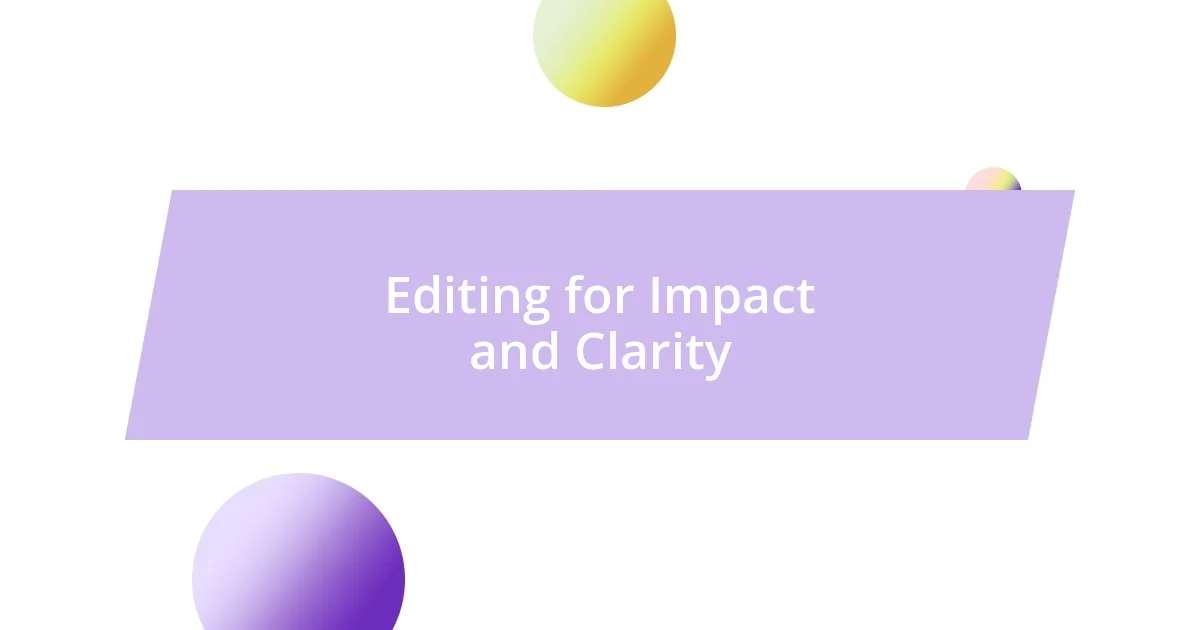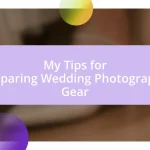Key takeaways:
- Visual storytelling involves conveying emotions and experiences through imagery, capturing moments that evoke feelings and connect viewers to a larger narrative.
- Defining your narrative voice is essential; it reflects your personal experiences and emotions, enhancing the authenticity and intention of your photos.
- Effective composition, including the use of light and editing, plays a critical role in transforming photographs into compelling stories that resonate emotionally with viewers.

Understanding Visual Storytelling
Visual storytelling is more than just snapping a picture; it’s about conveying emotions and experiences through imagery. I remember one rainy afternoon, I stumbled upon an elderly man sitting alone on a bench, his expression lost in thought. Capturing that moment told a thousand stories—his solitude, perhaps a lifetime of memories swirling in his mind—without a single word spoken.
When I think about visual storytelling, I often ask myself: What feelings do I want my audience to experience? It reminds me of a time I photographed a street festival. I didn’t just focus on the vibrant colors and joyful faces; I aimed to encapsulate the electric energy in the air. Each shot was a piece of a larger narrative, inviting viewers to feel as if they were part of that jubilant celebration.
The power of an image lies in its ability to evoke feelings and provoke thoughts. I find that the best photos often have a layer of intrigue, making viewers pause and ponder. What stories might be hidden behind the smiles? When I captured an intimate moment between two friends during sunset, I witnessed how their laughter transcended the scene. I realized then that visual storytelling is a dance between the subject and the viewer—a shared experience that fosters connection.

Defining Your Narrative Voice
Defining your narrative voice is crucial in shaping how your photos resonate with the audience. When I first began my photography journey, I struggled to find my unique voice. I remember feeling overwhelmed by the diverse styles around me, but as I explored my surroundings and reflected on my experiences, I discovered that my narrative voice is deeply influenced by my emotions and personal stories. It’s a unique reflection of who I am and how I perceive the world.
In my experience, a compelling narrative voice emerges when you blend authenticity with intention. For example, during a photography trip focused on nature, I often gravitate toward capturing the intricate details of plants. This stems from my childhood, where I spent countless hours in my grandmother’s garden. Each close-up shot of a dew-kissed petal is my way of cherishing those memories. By tying my past experiences to my photography, I amplify my narrative voice, enabling my work to tell more profound stories.
Ultimately, defining your narrative voice is about connecting your personal journey with the images you create. I find it intriguing how a simple photograph can evoke unique interpretations based on one’s experiences. It’s essential to let your perspective shine through, as it invites your audience to engage with your story on a deeper level. How do you perceive your moments in life, and how can that shape the stories you choose to share through your lens?
| Aspect | Definition |
|---|---|
| Authenticity | Your true self expressed genuinely in your photography. |
| Intention | The purpose behind each image, driving the narrative forward. |
| Connection | How your personal experiences resonate within your photos. |

Choosing the Right Subjects
Choosing the right subjects can profoundly impact the stories your photos tell. I often find myself drawn to everyday moments that might otherwise go unnoticed. Once, while waiting for a friend, I observed a young mother soothing her crying infant on a bustling city street. That fleeting moment of tenderness amidst the chaos was captivating—a beautiful contrast that revealed a deeper narrative about love and resilience in our fast-paced world.
When considering potential subjects, I lean toward those that stir emotions. Here are some tips that help me choose effectively:
-
Authenticity Matters: Look for subjects that feel genuine and reflect real-life emotions. Authentic moments often resonate more with viewers.
-
Contrast Is Key: Seek out compelling juxtapositions, like joy amidst sorrow or calm in chaos. Such contrasts can elevate your storytelling.
-
Familiar Faces: I frequently photograph friends and family. Their stories are deeply familiar to me, allowing for a more intimate connection in the final photo.
-
Unscripted Moments: Candid shots often capture genuine emotions. I’ve found that some of my best work comes from unexpected, unplanned moments.
-
Symbolism and Metaphor: Use subjects that symbolize larger themes or ideas, like an empty swing on a deserted playground to evoke nostalgia or loss.
These strategies not only help me find meaningful subjects but also infuse my storytelling with layers, inviting viewers to engage with the emotional depth of each image.

Composing Effective Photographs
Composing effective photographs goes beyond merely pointing and shooting; it’s about framing your subject in a way that draws viewers into the narrative. I recall a time when I captured a crowded marketplace at dusk. The vibrant colors and animated exchanges were visually stunning, but it wasn’t until I focused on a vendor’s weathered hands preparing traditional food that the true story emerged. That simple shift in perspective transformed a general scene into a tale of dedication and culture, something I felt was incredibly important to share.
In my experience, utilizing the rule of thirds can significantly elevate composition. It encourages me to position the main subject off-center, which often creates a more engaging image. During a sunset at the beach, I once placed a solitary figure walking along the shore to one side, allowing the expansive sky filled with soft hues to envelop the scene. This not only highlighted the person but also evoked a feeling of solitude and introspection. How do you balance your subject within a frame, and how does that impact the viewer’s emotional connection?
Lighting also plays a pivotal role in composition. I remember experimenting with soft morning light shooting dew-covered grass, the way it illuminated the droplets added a magical quality. It reminded me that the right conditions can transform even the most mundane subjects into captivating visuals. What stories do the shadows and highlights in your photographs tell? In my own work, I’ve found that considering light not just as a technical element, but as a narrative driver makes each image more compelling.

Using Light to Enhance Emotion
Utilizing light effectively can profoundly alter the emotional undertones of a photograph. I remember one late afternoon while hiking; I encountered a weather-beaten tree silhouetted against a glowing sunset. As the warm hues enveloped the scene, I captured the moment, and it struck me how the interplay of light and shadow transformed the image—imbuing it with a sense of both melancholy and hope. Isn’t it fascinating how light can change our perception so dramatically?
I’ve also found that soft, diffused light—like that found on overcast days—often nurtures a more intimate atmosphere. During a family gathering, I shot candid moments of laughter and connection by the window, where the diffused light filtered in gently. The resulting images felt warm and inviting, almost like a hug. Don’t you think that such lighting can enhance our connection to shared experiences?
On the flip side, high-contrast lighting can evoke drama and urgency. I once captured a street performer under harsh midday sun, their face half-hidden in shadow while they passionately engaged with the audience. The stark contrasts didn’t just highlight their intensity; they also elicited a sense of tension and excitement. How do you think light influences the emotional impact of your photos? For me, the right lighting isn’t just a backstory; it becomes a key character in the narrative.

Editing for Impact and Clarity
Editing plays a crucial role in refining the story your images tell. I once spent hours selecting the best shots from a vibrant festival. Initially, I was overwhelmed by the plethora of choices. However, as I narrowed it down, I discovered that emphasizing certain colors and cutting out distracting elements allowed the essence of joy and celebration to shine through more clearly. Have you ever felt the power of editing in transforming a seemingly chaotic scene into a cohesive story?
When it comes to impact, less is often more. I remember editing a series of portraits where I applied a subtle vignette around the edges. This small adjustment not only drew attention to the subject’s expressions but also evoked a sense of closeness. It felt like inviting viewers into an intimate moment—don’t you think the emotional connection can be heightened through thoughtful editing?
Clarity is essential in communicating your narrative effectively. I once experimented with adjusting the contrast and brightness in an image of a stormy sea. By enhancing the dramatic dark waves and emphasizing the brightness of the lightning strikes, the mood shifted entirely. Instead of a dull seascape, it became a visceral moment filled with tension and energy. How do you approach editing to maintain clarity while still preserving the intended emotion in your photographs? For me, striking that balance is what makes editing an art form in itself.












